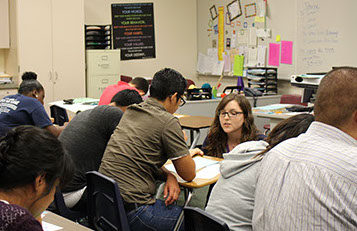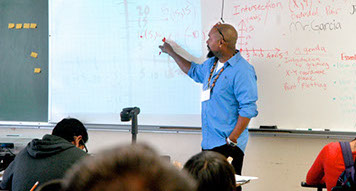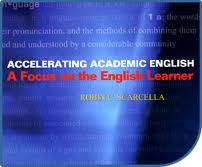Teaching Secondary Reading
A Resource for Improving Academic Literacy with Adolescents ©2015
Site Map
This site provides information, background, and resources to help middle and high school teachers support their students to become better readers, writers, and thinkers. That includes all students-- every section includes specific attention to the needs of English Learners, struggling readers, and students with disabilities.
 On the Planning pages, you'll find the California Common Core Literacy Standards along with tools and techniques to help you create high-quality lessons that address them.
On the Planning pages, you'll find the California Common Core Literacy Standards along with tools and techniques to help you create high-quality lessons that address them.
In the Instruction section are links to methods, including both the how and the why for using various approaches to literacy instruction.
Tools and resources in the Assessment section help you describe a learning target and tell whether and how well your students have met it.
In the Research & Theory section, you will find background, explanations, and studies related to the literacy behavior and development of adolescents.
You can find useful Links for online support of your classroom practice.
 Evolving Definitions of Secondary Reading
Evolving Definitions of Secondary Reading
Reading is one of the processes, along with listening, speaking, and writing, that people use as they interpret and compose text. Together we think of these processes as literacy. According to the Santa Barbara Classroom Discourse Group (1992), literacy has come to be understood as "a social accomplishment of a group" in which "teachers and students are constructing particular models of literacy and particular understandings of what is involved in learning how to be literate" (pp. 124-125). They explain further:
Viewed in this way, literacy is a socially constructed phenomenon that is situationally defined and redefined within and across differing groups, including reading groups, classrooms, schools, communities, and professional groups (e.g., educators, lawyers, doctors, administrators, and plumbers). What counts as literacy in any group is visible in the actions members take, what they orient to, what they hold each other accountable for, what they accept or reject as preferred responses of others, and how they engage with text. (pg. 124)
What counts as literacy, then, is a continually evolving idea, "defined, redefined, constructed, and reconstructed in the social life of a group" (pg. 147). As teachers know, ideas about what constitutes "enough" literacy for teenagers changes all of the time, and indeed is not widely agreed upon at any given moment. This website, along with professional instruction and guided fieldwork, aims to better equip secondary teachers to confidently and competently teach reading.
Academic English refers to "a variety or register of English used in professional books and characterized by the specific linguistic features associated with academic disciplines" (Scarcella, 2003, pg. 19). Academic English is used to read abstracts, take notes on key ideas from lectures, and write "critiques, summaries, annotated bibliographies, reports, case studies, research projects, and expository essays" (pg. 19). Academic English holds high status in the U.S. where it is a signal of education and societal power. A chief aim of schooling is the inculcation of Academic English.
Academic English is developed through literacy practice. Literacy is traditionally defined as the ability to read and write. In recent years, though, a more complex understanding of literacy has emerged as involving decoding, encoding, and higher order thinking processes (Scarcella, 2003), and all of the language arts (speaking, listening, reading, and writing) as they engage with many types of "texts" (including audio, video, images, etc.) (The New London Group, 1996).
 Activity. Excellent content area teachers are always teaching literacy, often even when they are not aware of it. That is because teaching thinking in the content is teaching academic literacy. This activity asks you to conduct a series of targeted observations in the classroom of an excellent teacher in your content area in order to discover how that teaching happens.
Activity. Excellent content area teachers are always teaching literacy, often even when they are not aware of it. That is because teaching thinking in the content is teaching academic literacy. This activity asks you to conduct a series of targeted observations in the classroom of an excellent teacher in your content area in order to discover how that teaching happens.
Teacher Kristin Symer
Photo by Stephanie Estrada
Teacher Jason Garcia explains math concepts.
Photo by Stephanie Estrada
The views and opinions expressed on unofficial pages of California State University, Dominguez Hills faculty, staff or students are strictly those of the page authors.
The content of these pages has not been reviewed or approved by California State University, Dominguez Hills.
